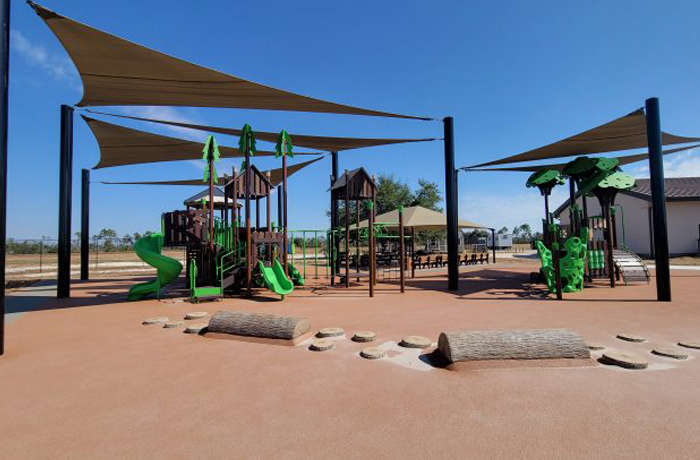As playgrounds become more inclusive and user-friendly, shade structures have evolved from luxury add-ons into essential design components. Not only do they provide comfort from sun exposure, but they also protect children and equipment from harsh weather, reduce UV risks, and extend outdoor play hours. But what happens when playgrounds vary in size, shape, and location?
The answer lies in customization. With experienced providers like the Inspire Play shade structure team, custom-designed solutions are entirely possible—regardless of the layout, equipment type, or environmental conditions of your site. Here’s how shade structures can be tailored to meet the unique needs of any playground.
1. Tailored to Playground Size and Layout
Every playground is different. Some are compact neighborhood pocket parks, while others span several acres with multiple play zones. A one-size-fits-all solution simply won’t work. That’s why manufacturers offer:
- Single-post shades for small or awkward spaces
- Cantilevered structures that provide overhead coverage without obstructing ground movement
- Modular multi-post systems for expansive areas like schoolyards or public parks
Shade designs are often mapped to fit precisely over swings, slides, benches, or sandboxes without interfering with play zones or safety surfacing.
2. Custom Heights and Clearances for Safety
Playground standards require specific clearances for equipment like climbing towers, slides, and monkey bars. Shade structures must not impede movement or reduce visibility for supervisors. Customization ensures:
- Minimum clearance heights are met for each age group
- Fabric and framing are installed to allow safe access and egress
- No interference with line-of-sight for parents, teachers, or caregivers
- Clearance for future equipment upgrades or additions
Engineering teams calculate load-bearing and impact resistance to maintain safety while allowing aesthetic flexibility.
3. Material and Color Customization
Customization isn’t just about size—it’s also about design appeal. Shade structures can be built using a variety of materials:
- Powder-coated steel for durability and resistance to rust
- Aluminum posts for corrosion-prone coastal areas
- High-density polyethylene (HDPE) fabric that blocks up to 98% of UV rays
Fabric colors can be matched to school branding, municipal themes, or natural park palettes. Some even include patterns, logos, or thematic designs (e.g., leaves, waves, stars) to enhance visual appeal.
4. Accommodating Climate and Regional Needs
Playground locations across different climates require unique considerations. For instance:
- In hot, sunny regions, UV-blocking fabric and heat-reflective materials reduce sunburn and overheating risks.
- In windy areas, engineered tensile structures are designed to withstand high wind loads and anchored to meet local building codes.
- In snowy climates, snow-load ratings ensure structural integrity during winter months.
By tailoring these elements, customized shade structures enhance safety and year-round usability.
5. Integration with Existing or Future Play Features
If your playground already has equipment, a custom shade structure can be retrofitted without disrupting the current layout. These canopies can be designed to:
- Wrap around existing towers or seating
- Provide segmented shade across different play zones
- Align with architectural or landscape features
- Leave room for future equipment expansion
This flexibility makes custom shading ideal for phased construction or renovation projects.
Conclusion
Yes, shade structures can absolutely be customized for any playground—regardless of size, complexity, or environmental conditions. From single-post covers to expansive canopies, today’s systems are designed with adaptability, safety, and style in mind.

